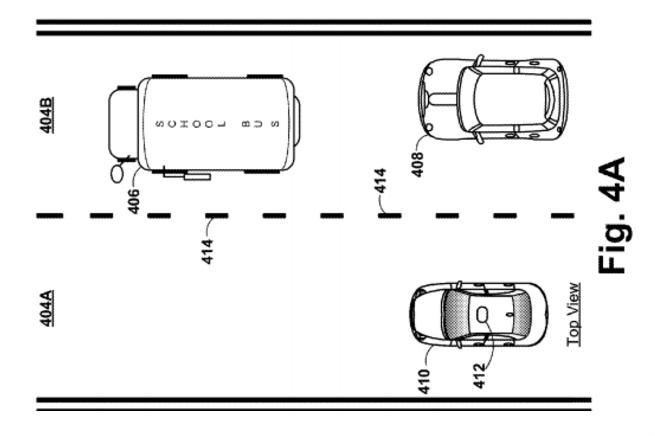
Thankfully, it was a gentle collision and no one was hurt, but the accident highlighted the huge technical challenges facing engineers working on a growing number of self-driving projects around the world.
Interestingly, a recently awarded patent reveals that Google engineers were already considering the potentially grizzly consequences of a bus coming into contact with one of its driverless cars, though judging by recent events it seems the technology outlined in the filing is yet to be fitted.
The patent actually focuses on technology to identify school buses – February’s accident involved a city bus – that would prompt Google’s car to proceed in a more cautious manner if such a vehicle was spotted.
Titled “Bus detection for an autonomous vehicle,” the filing describes image-recognition technology for helping a driverless car pick out the kid-carrying vehicle from other kinds of traffic. Having identified a school bus, which could of course be stopping to let children off, the self-driving car could then slow down and even have its sensors target critical areas such as the rear of the bus in case a child suddenly appeared.
Commenting on Google’s recent bus collision, Transportation Secretary Anthony Foxx told the BBC this week that occasional accidents caused by driverless technology were inevitable.
“It’s not a surprise that at some point there would be a crash of any technology that’s on the road,” Foxx said. “But I would challenge one to look at the number of crashes that occurred on the same day that were the result of human behaviour.”
He added, “I think the question here isn’t comparing the automated car against perfection, I think it’s a relative comparison to what we have now on the roads which is you and I, and our eyeballs, and our brains.”
All told, Google’s current fleet of 56 autonomous cars seem to be doing pretty well out in the wild. Since 2009, the souped-up motors have covered more than 1.4 million miles and been involved in fewer than 20 accidents, with all except the bus incident the fault of other drivers.
Editors' Recommendations
- Cruise woes prompt production halt of fully driverless van
- Cruise autonomous vehicle drives over woman just after she was hit by another car
- Watch folks react to their first ride in GM Cruise’s driverless car
- This self-driving racing car could have done with a driver
- GM Cruise given nod to test fully driverless cars in San Francisco


